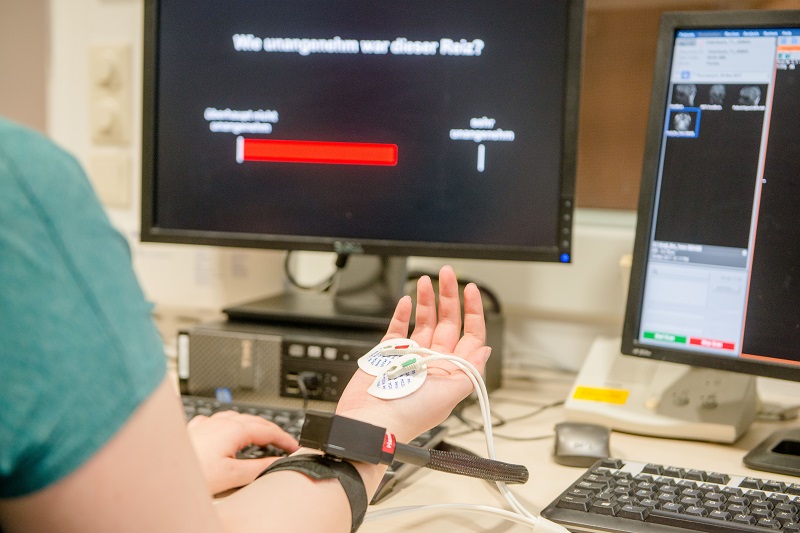
A11 – Appetitive and aversive pain-related learning in health and chronic back pain
Ulrike Bingel, Katharina Schmidt
Project A11 will investigate neural and behavioral mechanisms underlying the acquisition, extinction and reinstatement of pain-related fear in the context of somatic pain. We will compare patients suffering from chronic low back pain to healthy controls using a differential fear conditioning paradigm with painful heat as unconditioned stimuli (US) while collecting behavioral, physiological, neuroendocrine and neural data (MRI). The planned studies will examine (1) pain-specific aspects of fear conditioning, (2) the effects of pharmacologically induced stress on extinction recall and reinstatement and (3) neural common and distinct neural mechanisms underlying appetitive and aversive conditioning in the context of somatic pain.
Guiding questions of A11:
- Do behavioral and neural mechanisms of acquisition, extinction and reinstatement of CS-US associations differ between somatic pain stimuli and equally aversive auditory stimuli? Are these pain-specific effects enhanced in chronic low back pain patients?
- Does the systemic application of the glucocorticoid hydrocortisone impair the memory for extinguished fear of pain? Is this effect augmented in patients suffering from chronic low back pain?
- Do learning and extinction mechanisms differ between cues predicting pain relief and cues predicting pain exacerbation? What are the commonalities and distinctions between aversive and appetitive learning in the context of pain?






